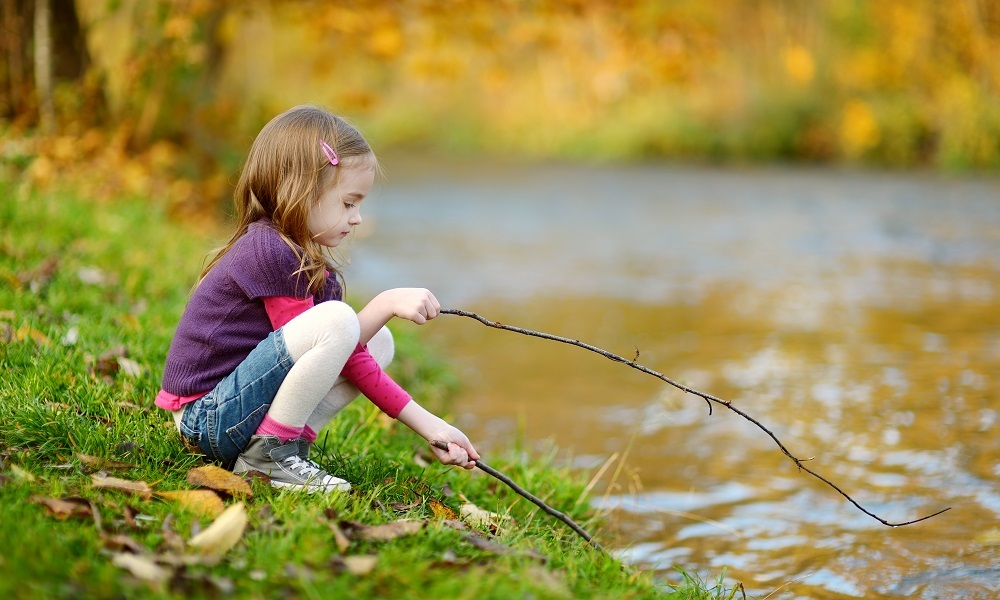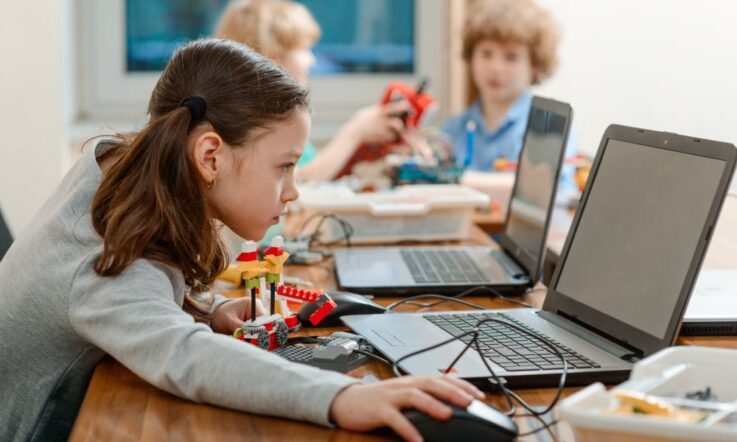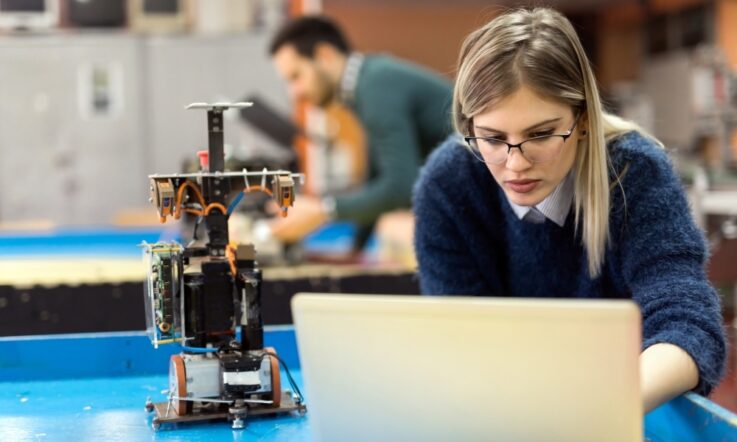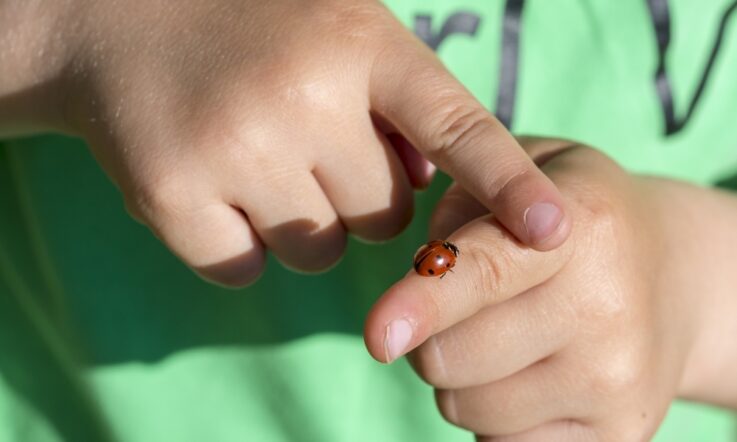We know that outdoor play has many benefits for early childhood development. However, these benefits can vary for children of different genders, particularly when play is limited by the use of gendered toys, or preconceptions of educators and families.
A recent Deakin University study has revealed that the unstructured and non-gendered nature of bush kinders can build children’s early confidence and skill development in Science, Technology, Engineering and Maths (STEM), with formation of children’s STEM identities often beginning in the early years.
Writing in the Journal of Adventure Education and Outdoor Learning, School of Education Research Fellow Chris Speldewinde and Professor Coral Campbell highlight the significance of this impact especially for young girls, who can often end up at the periphery of early STEM learning through the structured environments and play that takes place in regular kindergartens (Speldewinde & Campbell, 2021).
The difference between bush kinder and traditional kindergarten
While traditional kindergarten settings often engage children in ‘nature-based’ play – meaning that children learn about and engage with nature from within a structured setting – a key difference in bush kinder is that children are immersed within the bush setting, where the play-based learning takes place.
‘When children come in [to traditional kindergarten], there’s a time where they’ll sit on the floor and get settled, and they’ll have play time... they’ll often have a themed approach to some of their learning,’ Campbell tells Teacher, ‘and of course it is guided by what the Early Years Learning Framework actually requires kinder teachers to do in terms of enhancing children’s learning.’
‘The difference between the regular kinder and the bush kinder is that, in addition to this program approach in a regular kinder, you take children out into a bush kinder and they don’t take anything out with them in terms of play equipment,’ adds Speldewinde. ‘Ultimately, the children are left with only what’s out there in nature; the trees, the leaves, the natural structures for their play.’
Supporting the exploration of STEM identities through play in bush kinder
‘To develop a STEM identity means the child can relate to STEM in what they’re doing, and they have a belief in themselves that they are able to do whatever the STEM learning or activity is. So it’s a belief in their capabilities,’ explains Campbell.
By nature, bush kinder offers many opportunities for children to build their STEM identities. At times, STEM learning can arise without educator input, where children’s creative and independent thinking is strengthened by availability of resources around them.
‘When you’re in a bush kinder, there are no gendered materials. Everything that’s there is for anybody to play with,’ Campbell says.
For example, the researcher recalls a young girl attempting to move a piece of rabbit fur from the area she was playing in, by sourcing two sticks to use as levers.
‘She came back with two sticks. One was just coming up to a metre long, and the other one was about 800 millimetres long. And she attempted to pick up this bit of fur with the sticks. She was trying to move her hands to get leverage, but it kept falling off the stick. So she stopped after a few tries, and went off again… And she came back with a shorter stick – she’d gone looking… So then she had two sticks that were roughly the same length which served as levers. And she managed to pick up the fur because she was able to use her levers accurately.’
While children may freely play with sticks, leaves, bark and water in ways that demonstrate STEM skills, the educator’s role in bush kinder can also be to engage children in STEM concepts through conversational questioning.
Campbell and Speldewinde’s research involved an ethnographic study of four bush kinders in south-eastern Australia. Each kinder had a lead teacher and two educators, with 20-25 four-year-old children in each class. Data collection and research methods included observation, taking field notes, interviewing some of the educators and parents, as well as participating and being involved in play where appropriate.
‘One of my favourite examples with the STEM learning was the group of four or five children that were sitting on a log one day and that log became a rocket ship,’ Speldewinde recalls. ‘And so the educator was having conversations with them about the science of weather, of light and space… and starts asking, “Are you well balanced? What are you doing?” “We’re going into space.” “Oh what do you think you’ll see? How do you think it will feel? What do you need to take with you?”’
The benefits of ‘risky play’ in bush kinder
In terms of governance, bush kinders in Australia fall somewhere between the parallel nature kinder programs overseas such as Forest School in the UK, which, while also focused on immersive nature play, is more heavily regulated and corporatised. In Scandinavian countries like Denmark, nature kinder programs are governed locally and include whittling and fire making in the early years, which are considered life skills and central to the cultural ethos, explains Speldewinde.
While risky play (i.e., climbing a tree) is sometimes considered unsafe, it can also have benefits for the healthy development of children’s confidence and independence.
‘I think that comes down to educators in particular, feeling personally responsible for each child, and wanting to minimise all elements of harm. But I think that’s changing, because there’s a lot of understanding now that children have to be involved in risky play, because without that they don’t develop as well… there’s a lot more understanding now that risky play is part of a child’s normal development,’ Campbell explains.
The opportunity to engage in risky play can be particularly beneficial for young girls, who may have experienced gender expectations of engaging in more sedentary play styles. ‘I guess risky play is about that creative and curious learning, but it gives children the opportunity to manage themselves and their environment,’ says Campbell. ‘We see identities of girls change in that they become stronger people, or pick up leadership which they didn’t have.’
Nature-based learning in primary school settings
As a primary school teacher himself, Speldewinde is confident that the opportunities exist for primary schools to build on the nature-based learning that is taking place in bush kinders.
‘The idea of play, and learning through play and development is being embraced in primary schools already. But what I’ve seen only from an indoor capacity. Incorporating science and integrating STEM into that outdoor play, that is often part of Physical Education and Health programs, there is that capacity to do that as well.’
As for the direction of the research project going forward, Speldewinde explains that there is much more to explore in the rich learning environments of bush kinders. ‘While our study’s just been about STEM, what we haven’t looked at yet is the humanities, the geography, the history, connecting to country, Indigenous perspectives. So where I’d like our research to go in future is building not just on the STEM but also holistically on the learning of the child across multiple disciplines.
‘And if we can think of it in that way, there’s the capacity for it to become a really integral part of a primary school experience for children.’
References
Speldewinde, C., & Campbell, C. (2021). Bush kinders: enabling girls’ STEM identities in early childhood. Journal of Adventure Education and Outdoor Learning, 1-16. https://doi.org/10.1080/14729679.2021.2011337
As a teacher, consider how you can promote STEM learning outside of the classroom. How can you encourage students to explore using natural materials to engage with STEM concepts?



